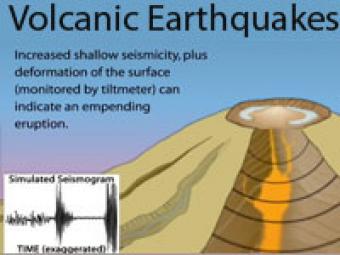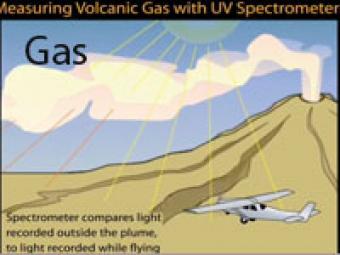
How can we know that a volcano is getting ready to erupt?
Volcano deformation can provide clues about what is happening deep below the surface. Two techniques used to monitor deformation include Tiltmeters and GPS. Like a carpenter?s level, an electronic tiltmeter uses a small container filled with a conducting fluid and a ?bubble? to measure a change in slope. Tiltmeters measure the amount of tilt in microradians, which is the angle turned by raising one end of a beam one kilometer long the width of a dime (equivalent to 0.00006 degree!). GPS measures the distance between two points to determine if they are moving further apart, as they might if magma was entering the system.
CLOSED CAPTIONING: A .srt file is included with the downloiad. Use appropriate media player to utilize captioning.

Earthquake activity beneath a volcano almost always increases before an eruption because magma and volcanic gas must first force their way up through shallow underground fractures and passageways. The continuous release of seismic energy is induced by the movement of magma.

Magmatic gas is the driving force of volcanic eruptions. A primary objective in gas monitoring is to determine changes in the release of certain gases from a volcano, chiefly carbon dioxide and sulfur dioxide. Such changes can be used with other monitoring information to provide eruption warnings and to improve our understanding of how volcanoes work.